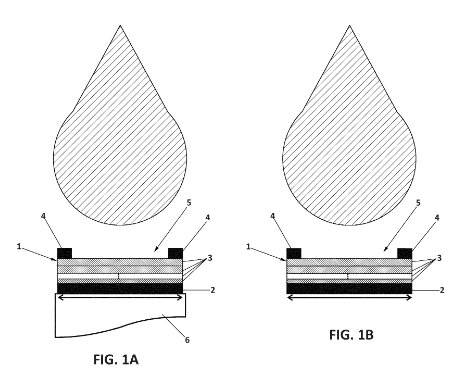 |
Energy harvesting device (PCT/EP2022/073950) An energy harvesting device for obtaining instantaneous energy from drops without needing of moving the drops along the device, in a reduced scale and combinable with other types of harvesting devices, the energy harvesting device comprising one or more triboelectric generators comprising a bottom electrode, a friction or triboelectric element placed over the bottom electrode, and at least two top exposed electrodes electrically connected placed over the triboelectric element and defining at least one gap between them, exposing the triboelectric element to the external environment so that on contacting a drop of liquid makes an electrical connection between the top electrodes varying instantaneously (microseconds range) the capacitance of the triboelectric generators.s |
 |
Patent licensing opportunities
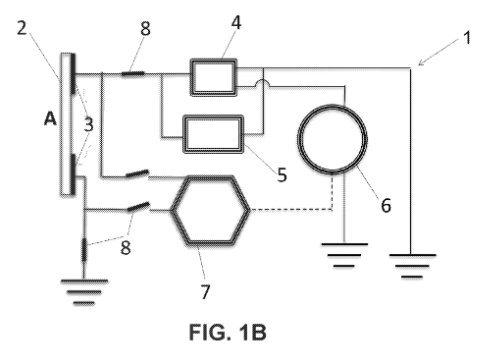 |
Device for removing and preventing the formation of ice on surfaces (PCT/ES2022/070383) Disclosed is a device comprising: a piezoelectric or ferroelectric substrate (2) on which ice is deposited; electrodes (3), connected to the substrate (2); a vector network analyser (7), connected to the electrodes (3) and configured to determine the resonant frequency of the substrate (2); and an excitation module including a function generator (6) that communicates with the vector network analyser (7) and is connected to an amplifier (4), the amplifier being connected to the electrodes (3). The excitation module is configured to apply to the electrodes (3), by means of an automatic switch (8), an AC electrical signal having a frequency coinciding with the resonant frequency measured in the vector network analyser (7) and which changes gradually as the ice melts. |
 |
 |
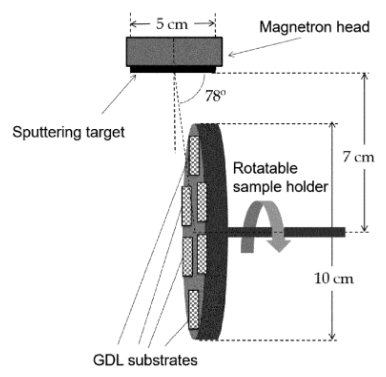 |
Porous ionomer-free layered metal alloy electrocatalyst electrode (EP4177379) The invention relates to a new kind of electrocatalyst to be incorporated as part of the electrodes, anode and cathode, in water electrolysers aimed for hydrogen production through the electrochemical splitting of water into oxygen and hydrogen. The electrocatalyst is characterized by a layered and porous structure that provides a high performance towards the oxygen evolution reaction in the absence of added ionomer. The object of the invention is framed in the field of energy.. |
 |
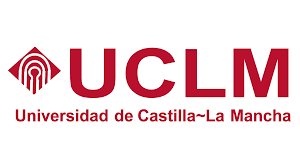 |
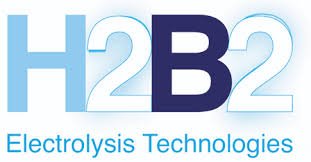 |
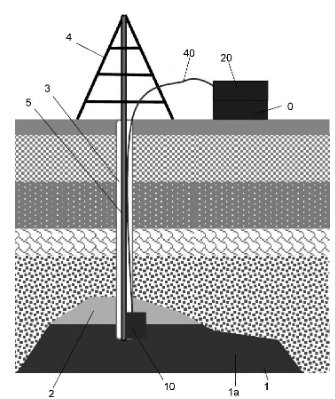 |
In situ identification system for petroleum products (ES2905643) On-site identification system of petroleum products in deposits, comprising a sensor unit with a first resonant photonic transducer provided with photonic cells (11) of resonant pillars and/or photonic cells (12) of nano structured pores in resonant layers and a second transreflection photonic transducer with a transrefleration mirror (12a) preferably in NIR and/or a resonant circuit in the range of radiofrequency; Interrogation means (20) to generate an optical question signal; a unit (30) of analysis and identification for analyzing the optical interference patterns generated and the transreflection spectra or the variation of the resonance frequency and to identify the petroleum product based on said analysis; and one (40) multichannel communication line. |
 |
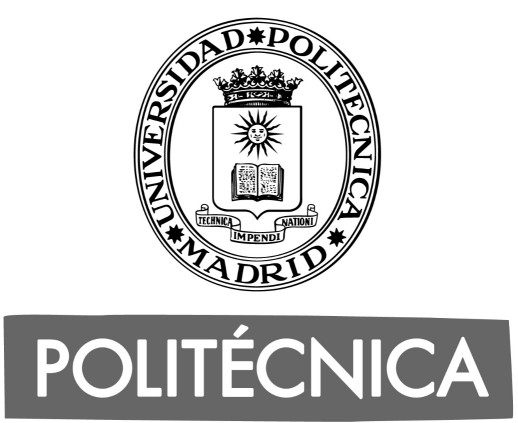 |
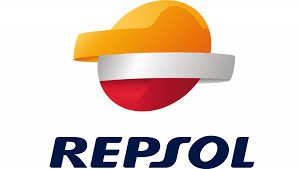 |
 |
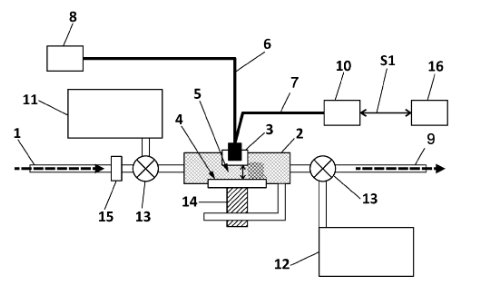 |
Optofluidic device to monitor the evolution of liquid products by near infrared spectroscopy (EP3798606) Optofluidic device for analyzing fluids comprising a near-infrared «NIR» light arrangement (8) to provide a light beam, a NIR detector (10) to receive it and to emit a signal (S1) associated with the characteristics of the light beam, an optofluidic cell (2) to house the fluid, variable in size, comprising an illumination window (3) to allow the light beam to pass through, a NIR mirror (4) to receive the light beam and to reflect light in a specific range of wavelengths, an actuator (14) to vary the distance between the illumination window (3) and the NIR mirror (4), an optical arrangement, comprising a first set of optical fibers (6), which connects the NIR light source (8) to the optofluidic cell, and a second set of optical fibers (7), which connects the optofluidic cell (2) to the NIR detector (10), a processing module (16), to analyze the signal (S1) emitted. |
 |
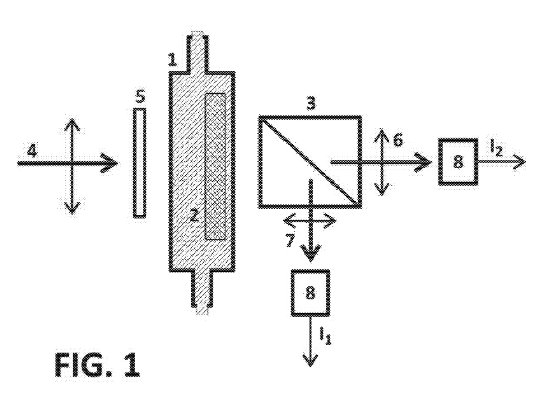 |
Sensor, apparatus and method for determining a concentration of solute in a solution (PCT /ES2016/070764) The document describes a sensor, apparatus and method for the direct analysis of fluids in order to determine a concentration of solutes in solutions, such as the concentration of glucose in aqueous solutions. Transducers with porous birefringent monolayer or multilayer structures (such as a planar photonic structure in the form of a Bragg microcavity) may be used as sensors. The method of the invention can be performed in two possible implementations; a first one, wherein the sensor (2) is a photonic crystal in a microfluidic device (1) which comprises two transparent windows, data being retrieved in transmission mode and a second one, wherein the photonic crystal sensor is located on the tip of an optical fiber, data being retrieved in reflection mode. |
 |
 |
 |
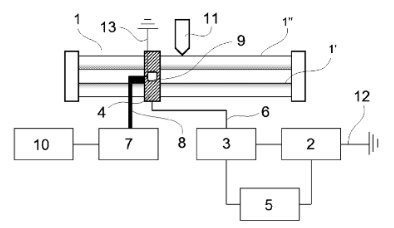 |
System and method for analysing the gas present in the interannular space in tubular solar receivers (PCT/ES2016/070250) The invention relates to a non-invasive method and system for evaluation of the state of vacuum and detection of the type of gas present in the interannular cavity of receiver tubes (1) arranged in cylindro-parabolic collectors. The method comprises the ignition of a plasma in the annular cavity of said receiver tube (1), and the subsequent evaluation of the spectrum emitted by the excited plasma by means of an optical analysis subsystem. The system according to the invention also comprises a radiofrequency source (2), an impedance coupler (3) and a radiofrequency applicator (4) by which means radiofrequency energy is applied to the glass outer cover (1») of the tube (1). The optical analysis subsystem is provided with a spectrometer (7) which is connected to a computer (10) and carries out the analysis of the spectrum of the gas present in the receiver tube (1).. |
 |
 |
 |
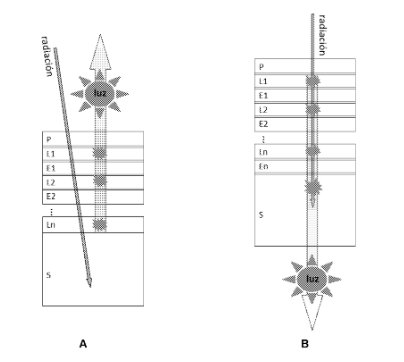 |
Electron and ion energy scintillator (PCT/ES2015/070149)
Our scintillator devices are designed with a multilayer structure of several inorganic scintillators materials. Each scintillators layer, deposited with thin film technology (Gil-Rostra et al. Surf. Coat. Technol. 222 (2013) 144), consists basically of rare earths ions (Eu, Tb, Ce, …) doping insulating (SiO2, ZrO2, Y2O3, …) or semiconductors matrices (TiO2, ZnO, …). The color and intensity of the emitted light of the final device depends on the depth reached by the radiation (electron, ions) impinging on its multilayer structure. In particular, the color of the emitted light is mainly selected by the type of rare earth doping of the active luminescent layers, and its intensity depends on the doping level and film thickness of the active layers. The developed scintillator detectors may find application as beam monitors in materials science applications (SEM or SAM microscopes, ion beam implanters, equipment dedicated to XPS, AES, REELS surface science analysis), in medicine as 3D radiation dose monitors, or in fusion reactors as monitors of magnetohydrodynamic instabilities
|
 |
 |
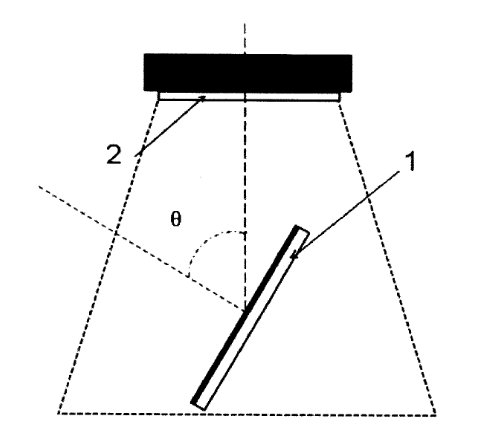 |
Method for producing a hydrogen detection sensor, and resulting sensor (PCT/ES2014/000157) The invention relates to a method for producing a visual hydrogen sensor and to a sensor produced in this manner, said sensor allowing the presence of hydrogen gas in a medium to be detected by the naked eye as a result of a change of colour in the sensor. The method involves the deposition of thin porous layers of oxides that do not absorb visible light in their completely oxidised state and which become coloured when they are partially reduced. The deposition step is carried out using vapour phase deposition (VPD) in a glancing angle configuration (GLAD). The method also involves: the preparation of a solution of an active metal precursor, capable of dissociating the hydrogen molecule, and a carrier vector; and the deposition of said solution on the oxide layer in order to incorporate a minimum quantity of active metal within the pores of the oxide layer in the form of nanoparticles. |
 |
 |
 |
 |
Resorbable Membrane for guiding bone regeneration (PCT/ES2013/070924)
CSIC, in collaboration with the Andalusian Public Health System and the Universities of Seville and Cadiz, has developed a fabrication method of polymeric membranes which, being biodegradable and resorbable, are especially suited for the promotion of guided bone regeneration. The method, based on the plasma treatment of one the surfaces of the membrane and the plasma deposition of nanometric layers of a bioactive oxide material on the other, permits to control the degradation of the implanted material and favors the formation of bone tissue without requiring the removal of the membrane.
|
 |
 |
 |
 |
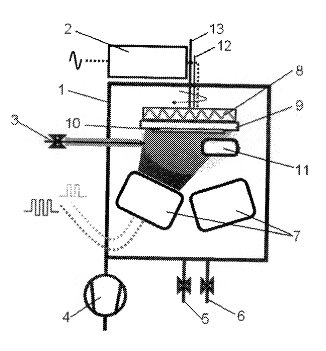 |
Method for producing a dielectric and/or barrier layer or multilayer on a substrate and device for implementing said method (PCT/ES2013/000264)
The invention relates to a method for producing dielectric and/or barrier layers on a substrate, characterised in that it comprises the following steps: (a) cleaning substrates, (b) placing the substrate in a sample carrier and introducing same into a vacuum chamber, (c) dosing an inert gas and a reactive gas into said vacuum chamber, (d) injecting, into said vacuum chamber, a volatile precursor that has at least one cation of the compound to be deposited, (e) activating a radiofrequency source and activating at least one magnetron, (f) decomposition of the volatile precursor by plasma, producing the reaction between the cation of the volatile precursor and the reactive gas at the same time as the reaction is produced between the reactive gas contained in the plasma with the cation generated from the target by cathode sputtering, thereby generating the deposition of the film on the substrate. The invention also relates to the device for carrying out said method.
|
 |
 |
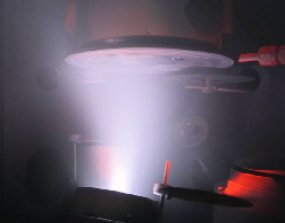 |
Versatile and economical method of manufacturing mixed oxide thin films (P201230048) The process consists of the simultaneous deposition of a ceramic matrix, using a reactive magnetron sputtering source, and the evaporation of a metalorganic compound of at least one cation of the mixed oxide to be grown. The energy and strongly oxidizing plasma generated by the magnetron sputtering process is used to decompose the metalorganic precursor, leading to the reaction of the cation, coming from the metalorganic precursor, with the oxygen contained in the plasma, causing the deposition of an oxide film on the substrate. The metal is incorporated into the ceramic matrix in a proportion which depends on the relative speed of «evaporation» of the two sources involved.ormation of bone tissue without requiring the removal of the membrane. |
 |
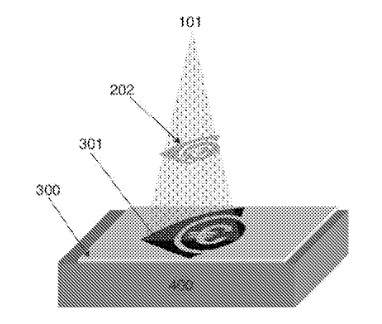 |
Procedure for marking, encryption, labelling and optical coding (PCT/ES2010/070054) It permits marking or recording motifs on surfaces whereon there has been deposited previously a fluorescent polymer layer through a procedure of plasma polymerisation of molecules of a colourant. The procedure combines the special characteristics of the polymer layers making them suitable for being capable of recording diverse motifs thereon, and the possibility of recording by laser or other techniques. Among such characteristics should be mentioned the possibility of a notable visual effect, including for thicknesses of 100 nm, the use of layers non-observable when illuminated with visible light, the high optical quality (transparency) thereof, or the facility wherewith they may be processed by subsequent treatments, including diverse laser treatments. |
 |
 |
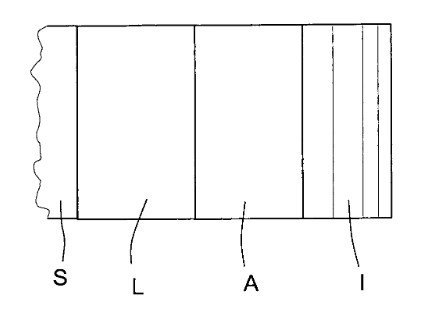 |
Polymer lens comprising a hardening layer, an absorbent layer, and an interferential multilayer, and corresponding production method (PCT/ES2010/000100) The invention relates to a polymer lens comprising a hardening layer, an absorbent layer, and an interferential multilayer, and to a corresponding production method. Said polymer lens comprises a hardening layer, an interferential multilayer, and an absorbent layer therebetween. The absorbent layer is formed from a metal, a metal oxide, or a metal nitride that can produce a transparent layer using sputtering deposition, and also comprises cations of a colouring metal of the group formed by the transition elements that, in an oxidised form, have a cation that absorbs electromagnetic radiation in the visible spectrum. Between 10 atom % and 70 atom % of the cations, in relation to the predominant metallic cation in said absorbent layer, are said colouring metal cations. |
 |
 |
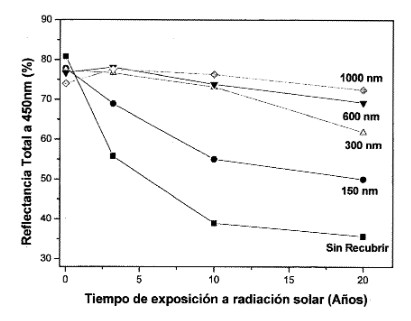 |
Stone agglomerate slab or flag with TiO2 or ZnO coatings (PCT/ES2009/000393) Article in the form of a slab or flag fabricated from stone agglomerate coated with thin, transparent films of TiO2 or ZnO, using dry deposition techniques, with a high level of resistance to solar degradation, said article having the form of a slab or flag fabricated from stone agglomerate coated with a thin, transparent film of TiO2 and/or ZnO with low or zero photocatalytic activity, said film being deposited by means of dry deposition, physical vapour deposition (PVD) or plasma enhanced chemical vapour deposition (PECVD) techniques. Said article has a high level of resistance to solar degradation, which means that the resulting material is suitable for external environments. |
 |
 |
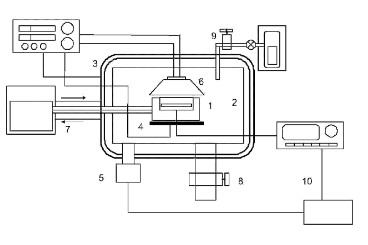 |
Device for determining the porosity of thin films and use thereof (PCT/ES2008/070099) The invention relates to a device to determine the adsorption/desorption isotherms and porosity in thin films, supported membranes, and directly supported nanostructured materials. For this purpose, the adsorption and desorption isotherms of the sample are determined and subsequently used to determine the type of porosity of the sample, as well as the pore volume and pore size distribution thereof, using solid surface thermodynamic and physicochemical concepts. |
 |
 |
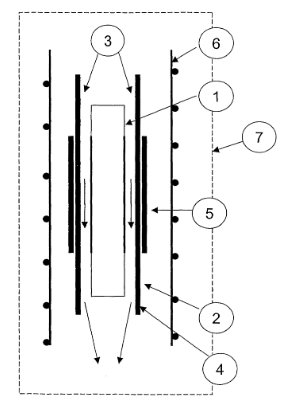 |
Procedure and reactor for the reformation of fuels (PCT/ES2007/000214) The present invention relates to a procedure for the reformation of gaseous or liquid fuels in mixtures with water and/or CO2 in a dielectric barrier discharge (DBD) plasma reactor. It is differentiated from other reformation procedures based on plasma techniques in that the design and characteristics of the reactor are conducive to having virtually the entire process lead to the production of mixtures of carbon monoxide and hydrogen, with virtually no contribution from higher hydrocarbons. This process takes place at low temperatures and has low electrical power consumption requirements. Furthermore, the present invention relates to a barrier discharge plasma reactor for the reformation of fuels comprising a power supply source, a cylindrical electrode and a dielectric device. |
 |
 |
 |
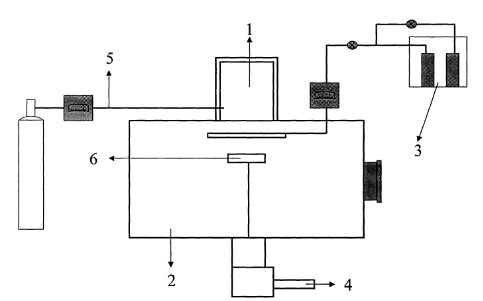 |
Method for preparing thin porous layers of inorganic oxides (PCT/ES2002/000193) The invention relates to a method for preparing thin layers of inorganic oxides on substrates by means of plasma-assisted vapour phase deposition. The inventive method is different from other common methods in that organic layer deposition steps are included between the successive inorganic oxide deposition steps such that, during the inorganic layer deposition step, the previously-deposited organic part is eliminated by combustion. Said method is suitable for developing selective membranes that are used to separate and purify fluids and to produce and modify sensors for gases and humidity and electronic components |
 |
 |

